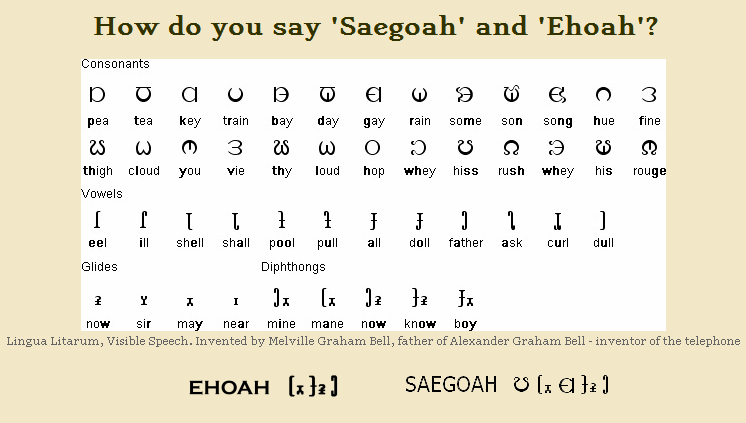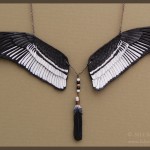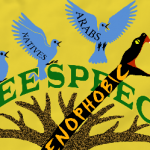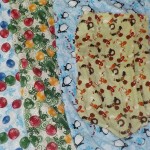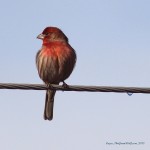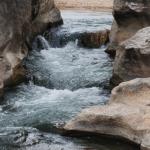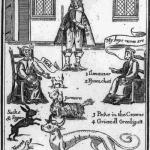A previous post I did on the Cultural Quandary of the Earth’s Civil Calendar had explained how we ended up with the calendar we have and what quandaries arose from it. In this post I’ll go into a calendar I’ve developed that addresses the dilemmas that arise with the Gregorian Calendar. But this would need a bit of a back story.
Seeing The Connection
The concept of even trying to make a calendar that differed from the Gregorian one most commonly used today, began with the local pagan group I was involved with (having since moved away). In attempts to celebrate according to the common modern pagan wheel of the year it was frequently found that it wasn’t fitting for us in northern Ontario Canada. What was meant to be spring, often celebrated as Imbolc, was in the middle of winter, and the coldest part of it to boot; and end of harvest, usually celebrated as Samhain, was well past end of harvest for us. This was because the wheel of the year was based upon a celtic calendar, and the lands of their origin were of very different seasons. So the group was considering trying to make their own calendar so that we could celebrate in accordance to our reality.
I personally always wondered at how we even had our civil calendar we have and thought it strange that a calendar that was solar in time span wasn’t designed around the solar events. So I decided to make a calendar that worked with the environment instead of ignoring it and then our group could use it for our celebrations. One year later I had made a calendar that would work for the entire northern hemisphere that respects the varying climates throughout. I had presented this to the group, but at that point they found that working with the Gregorian calendar was better suited to the group’s purposes as it was a diverse group and wanted to respect the variety of celebrations. So instead of having a calendar that could make someone of a different tradition feel left out, the general de facto global civil calendar would be used to put all the celebrations on and not have anyone feel left out. This worked well for the purpose of the group, but after spending a year on this project and one that actually worked, what do I do with it now? One friend pointed out that I was already making my own tradition and that they liked seeing where it was going. This was the defining moment. Before that point there wasn’t a concept of an Ehoah tradition, just the philosophy of the one druid in the group,
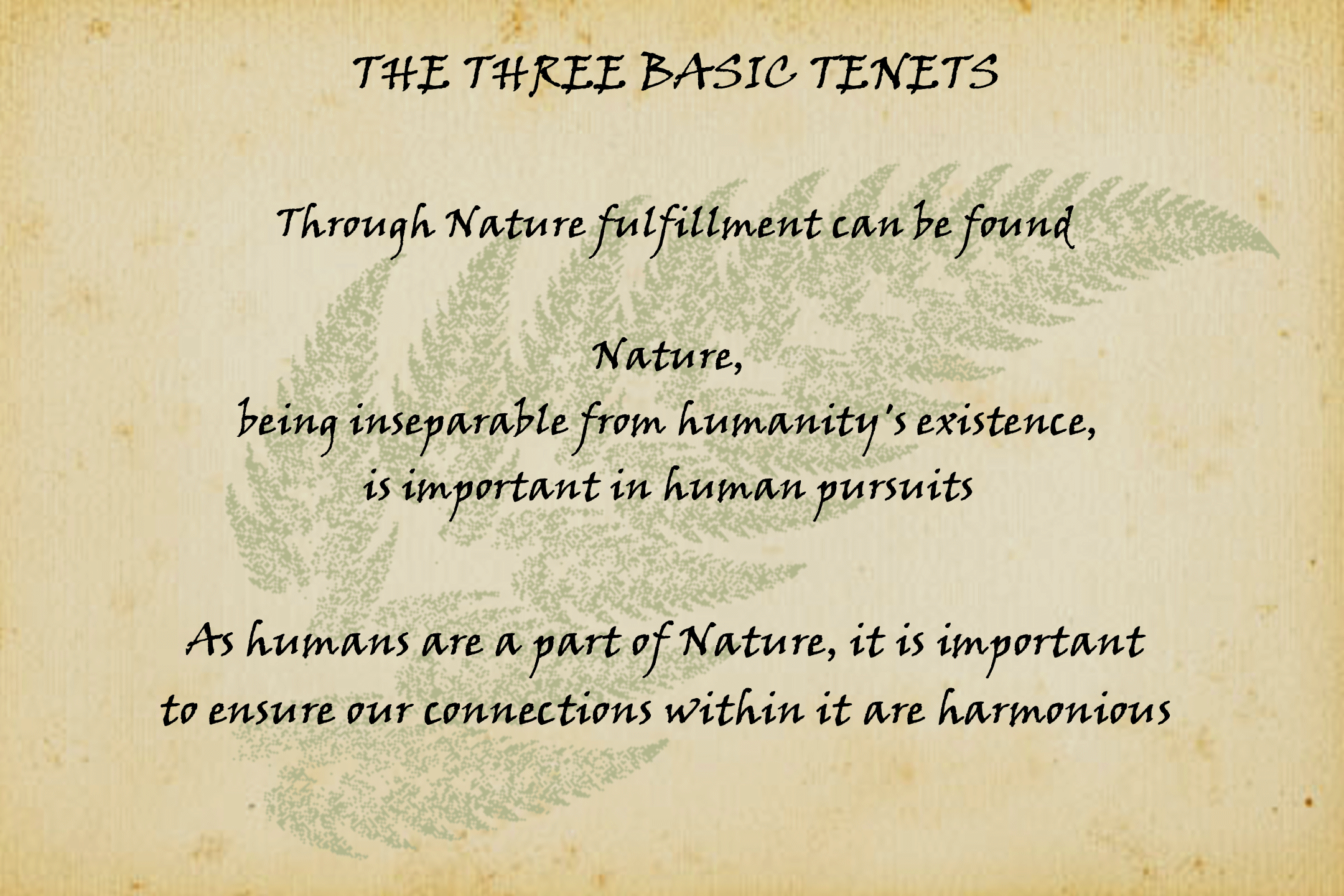
and then there it was staring right back at me without me realizing it. It was then that I became a Saegoah (translation: Seeker of Ehoah – complete harmony within Nature).
So when I present this calendar, I am also presenting the birth of a new tradition – Ehoah.
Ehoah strives for a holistic approach, in which it became plain that I was missing an entire hemisphere, so I made a complimentary southern hemisphere calendar. From there I could just combine them to make a planet wide calendar that acknowledged the differences in each, and I did. In a total of two years the Kalendars were complete.
Kalendar Design
Dividing The Year
As mentioned before, the Gregorian calendar is solar in time span but does not revolve around the solar changes in its design; this calendar is designed around the solar changes. It makes you aware of the natural changes that occur around you, is simple in its function (which ended up never needing to be replaced with next year’s calendar – being perpetual) and functions with respect to each hemisphere’s experience of their environment and when combined, for the world at large. Anyone who uses these kalendars will instantly become aware of the night sky, wildlife, and the solar changes with the seasons around you just by knowing the date. Naming them Kalendars is a nod to the origin of the word Calendar which was originally spelled with a ‘k’ and keeps it phonetically simple.
In designing the kalendar to be reflective of the solar changes the year was divided by the four major solar events. (click image to view descriptions better)
The time span between them were counted, then the distance between each were subdivided into months (29-31 days long) in a way that the solar event was on the beginning of a month.
These months did not line up with the gregorian months and would have to be renamed. But how do you name a month? I considered doing what the ancient Romans did – numbering them in order from the beginning of the year to end. But I thought that it would be best to take the opportunity to draw connections to our surrounding environment for the month you were in. Since the design was based on solar events, I thought, why not continue with the theme? The sun is but a star among the billions upon billions of stars out there, all I had to do was incorporate those stars too; the simplest being in the form of constellations.
Looking To The Stars
Now there isn’t just one set of constellations out there, we are just very familiar with the one. Many cultures from all around the world have different pictures they see in the sky so another lexicon of constellations wasn’t going to do any harm. The decision to make now is which stars would be most appropriate to incorporate for the months? Instead of those that become visible on the horizon like the western zodiac, I decided to look toward the poles, because those stars will remain seen in their respective hemispheres even thousands of years into the future – unlike the western zodiac that has had its constellations shift out of alignment from their original symbolic seasons.
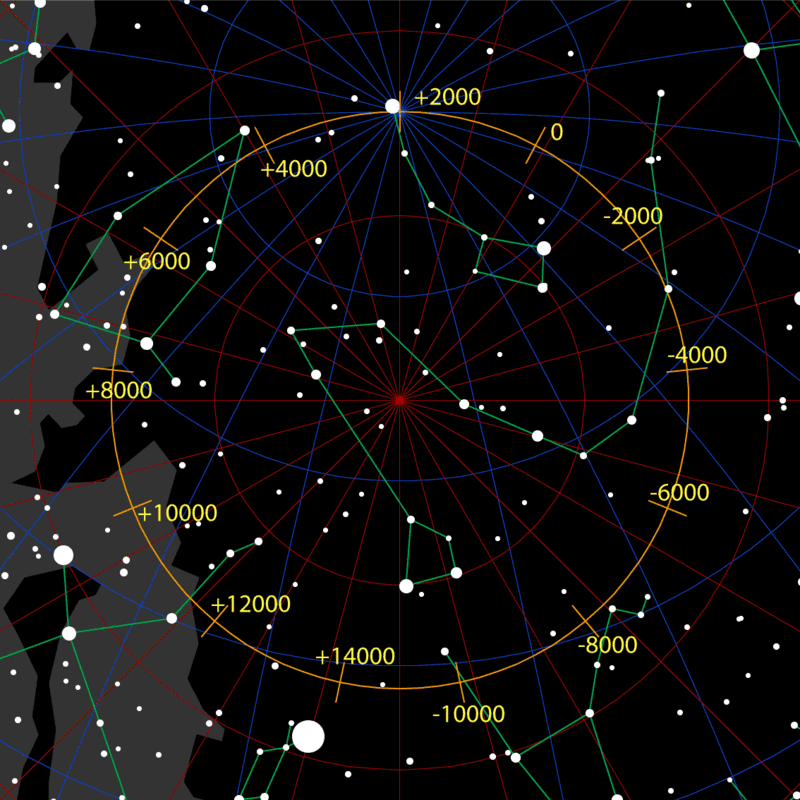

To simplify, in current times, the set of stars used would be those that are viewed in the center of the sky at midnight during their respective months. It was with these stars that new constellations would be formed, that way even as they shift over time they would remain in their respective order. Now the decision of what images should be seen?
The intended idea in the first place was to draw connections with our surrounding environment, and with my background in wildlife conservation, wildlife became an easy reference point. So for each month the wildlife that was most active that time of year and well established throughout the hemisphere would be represented in their respective set of stars.
The constellation with the polar stars were represented by an aquatic bird, of which took a fascinating evolutionary path from sea, land, sky, and back to the water again. For Borealis (the northern hemisphere) this would be represented by the Loon, whose taxonomic name is Gavia. Australis (the southern hemisphere) would be represented by the penguin, also called Sphenisci through its taxonomic name. For the world it would be represented by the Osprey, taxonomicaly of the genus Pandion.
Pandion is admittedly not aquatic, but depends on the water for its livelihood and can be found worldwide with the exception of Antarctica – making it an ideal candidate. The Pandion constellation spans both hemispheres with its body along the equatorial region and each wing extending deep into each hemisphere. The image below shows these ‘Kalendar Centers’ as would be seen along the equator if the planet’s horizon wasn’t obstructing the view.

The Pandion constellation can be seen in the equatorial night sky 11 out of the 12 months of the year, while both polar constellations can be seen year round within their respective hemisphere.
The Months
Gavia Kalendar – The Borealis Year Wheel
The months for Borealis starting from the Equilux (vernal/spring equinox) would be as follows: Ursa (bears – coming out of hibernation), Rana (pond frogs – frogs out of hibernation & breeding), Hinnuleus (fawns – are or will be born), Anguis (grass snakes – shedding skins), Ardea (herons – fledging), Castor (beavers – this year’s matured offspring migrating & settling), Anserini (geese – migrating), Cervid (deer – rutting), Tetraoni (grouse – wintering bird), Alces (moose – large over-wintering herbivore), Lynx (lynx – well adapted overwintering predator), Pteromyini (flying-squirrel – breeding season).
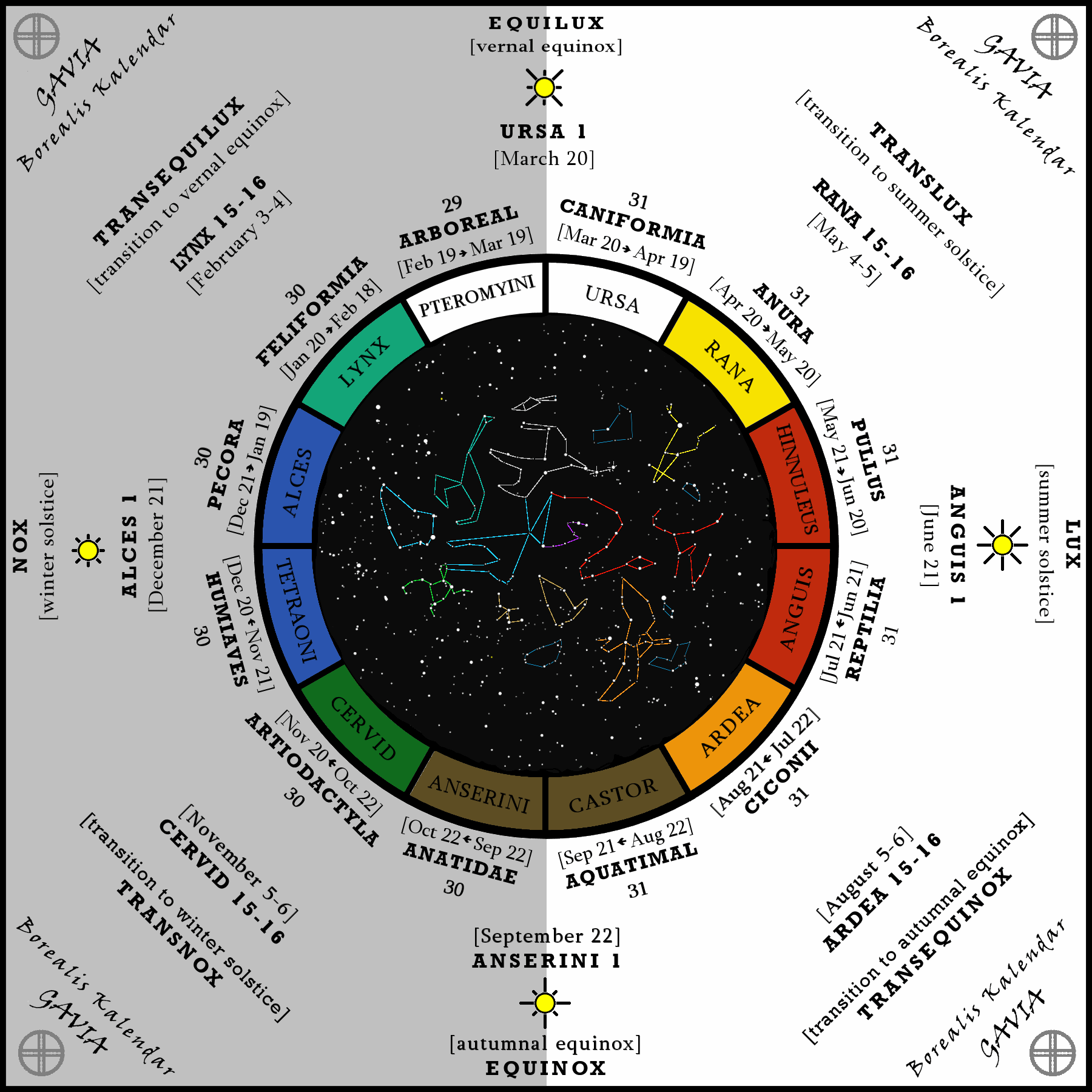
The Novemmorium Relation
You will notice that there is a colour system going on with this calendar. This stemmed from a previously made item prior to becoming a path, the Novemmorium.
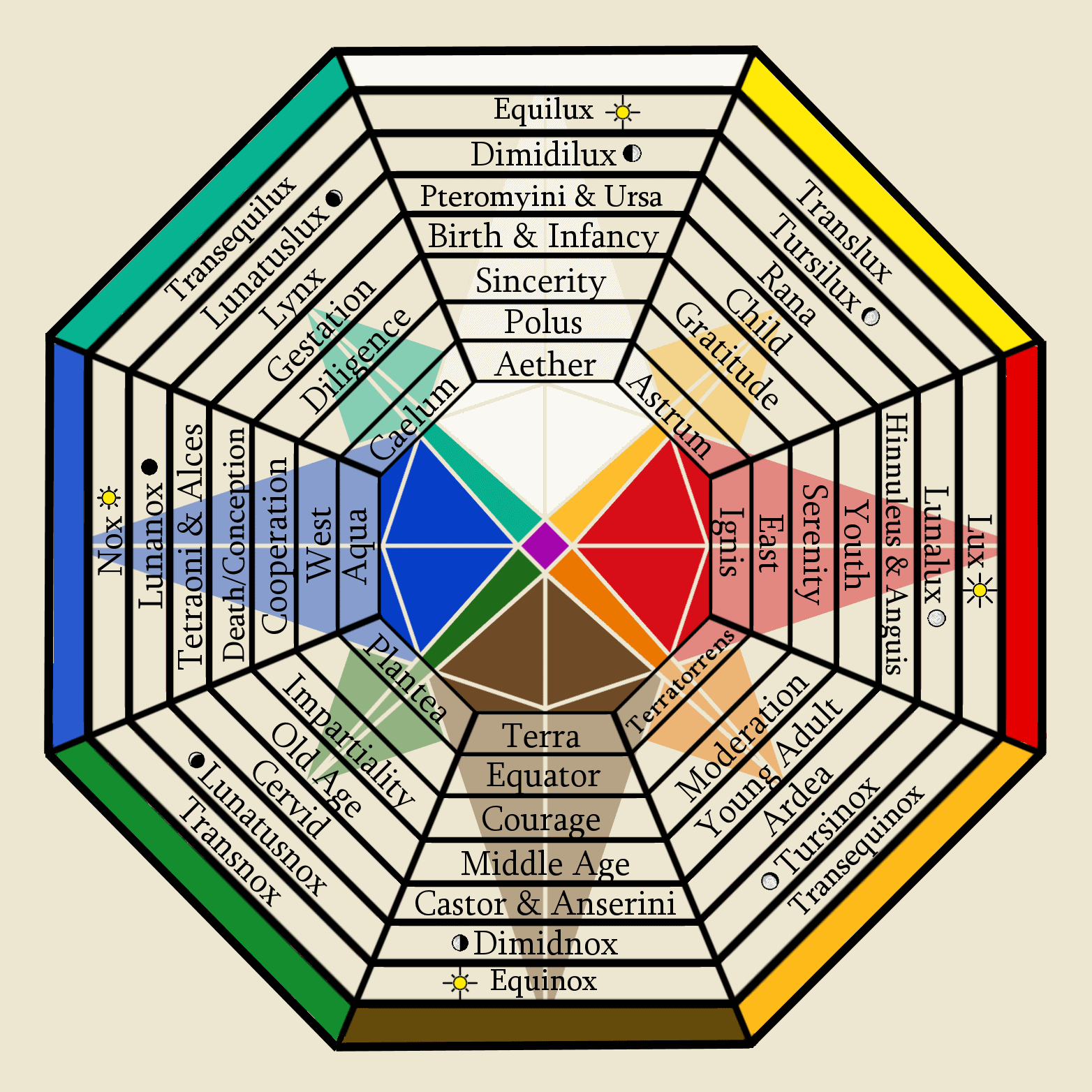
This was an older experiment that was inspired by the ‘Bagua’ – a Taoist compass traditionally used to orient your life. The Bagua has eight diagrams used in Taoist cosmology to represent the fundamental principles of reality, seen as a range of eight interrelated concepts. The Novemmorium on the other hand, takes the same chart shape but has its own names and interrelated meanings to aid in conceptualizing Nature. The Novemmorium isn’t a necessary element in Ehoah and other such elements are welcome on the Ehoah Path. Likewise these Kalendars are not necessary either and are merely designed as an option for use by Saegoahs. That way it remains open to diverse approaches and views for achieving Ehoah, enabling a greater potential for practitioners to be successful in their journey.
When making the original calendar, for kicks I overlayed the Novemmorium to see what it would look like. And to my surprise it lined up a lot of things, as well as making the yearly changes come out more clearer.
The Dark half of the year (shown with a grey background) has cool colours. The light half of the year (shown with a white background) has warm colours. The solar events have two mensis (months) on either side of them, while the transition months are of one mensis. The most notable of these transition months are the teal mensis of Lynx representing the coldest time of year, and the orange mensis of Ardea representing the hottest time of year. It naturally dividing along the solar changes made the division of the year very simple and clear to understand, which anyone in the northern hemisphere can recognize and relate to without conflict with regional seasons (more on that later).
Sphenisci Kalendar – The Australis Year Wheel & The Pandion/Globus Kalendar
After the Borealis Year Wheel was made the Australis one followed. And with the concept of them combining to become a world calendar the Australis Year Wheel was made in mind of having similarities with the Borealis Year Wheel in order to create the global version.
So the Australis mensis are as follows with their global connection to the Borealis mensis:
Otarii (sealion) – Caniformia (dog-like)
Hyla (tree frog) – Anura (frogs)
Joeius (Joey) – Pullus (young animal)
Crocodilus (crocodiles) – Reptilia (reptiles)
Ibis (Ibis) – Ciconii (long legged wading birds)
Sirenia (Sea Cows) – Aquatimal (aquatic mammal)
Tadornin (shelducks & sheldgeese) – Anatidae (ducks, geese & swans)
Camelid (camels, llamas, alpacas, vicuñas, and guanacos) – Artiodactyla (even-toed ungulate)
Ratite (large flightless ground birds) – Humiaves (ground birds)
Giraffa (Giraffes) – Pecora (even-toed hoofed mammals)
Panthera (tigers, lions, jaguars & leopards) – Feliformia (cat-like)
Platyrrhini (New World monkeys) – Arboreal (tree travel)
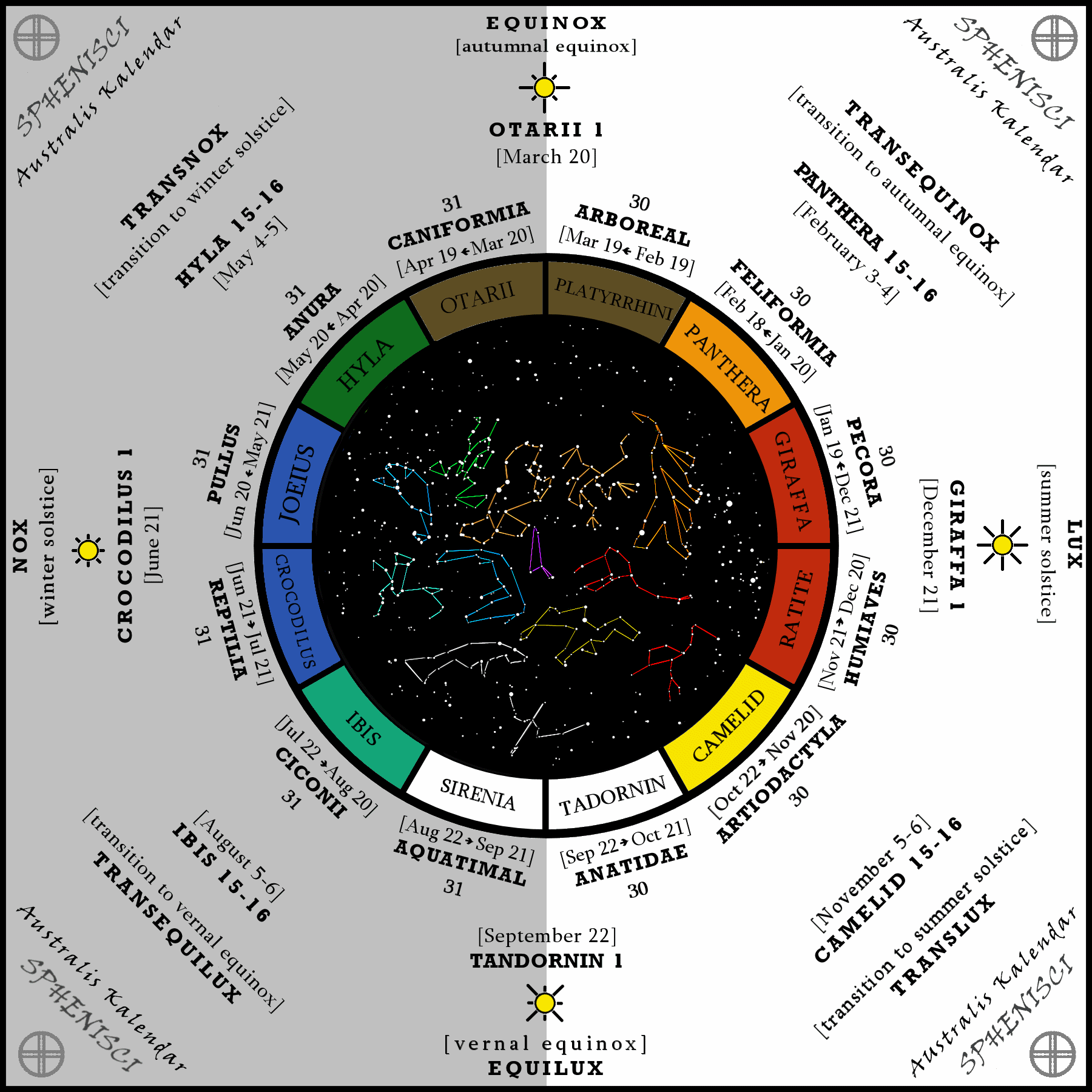
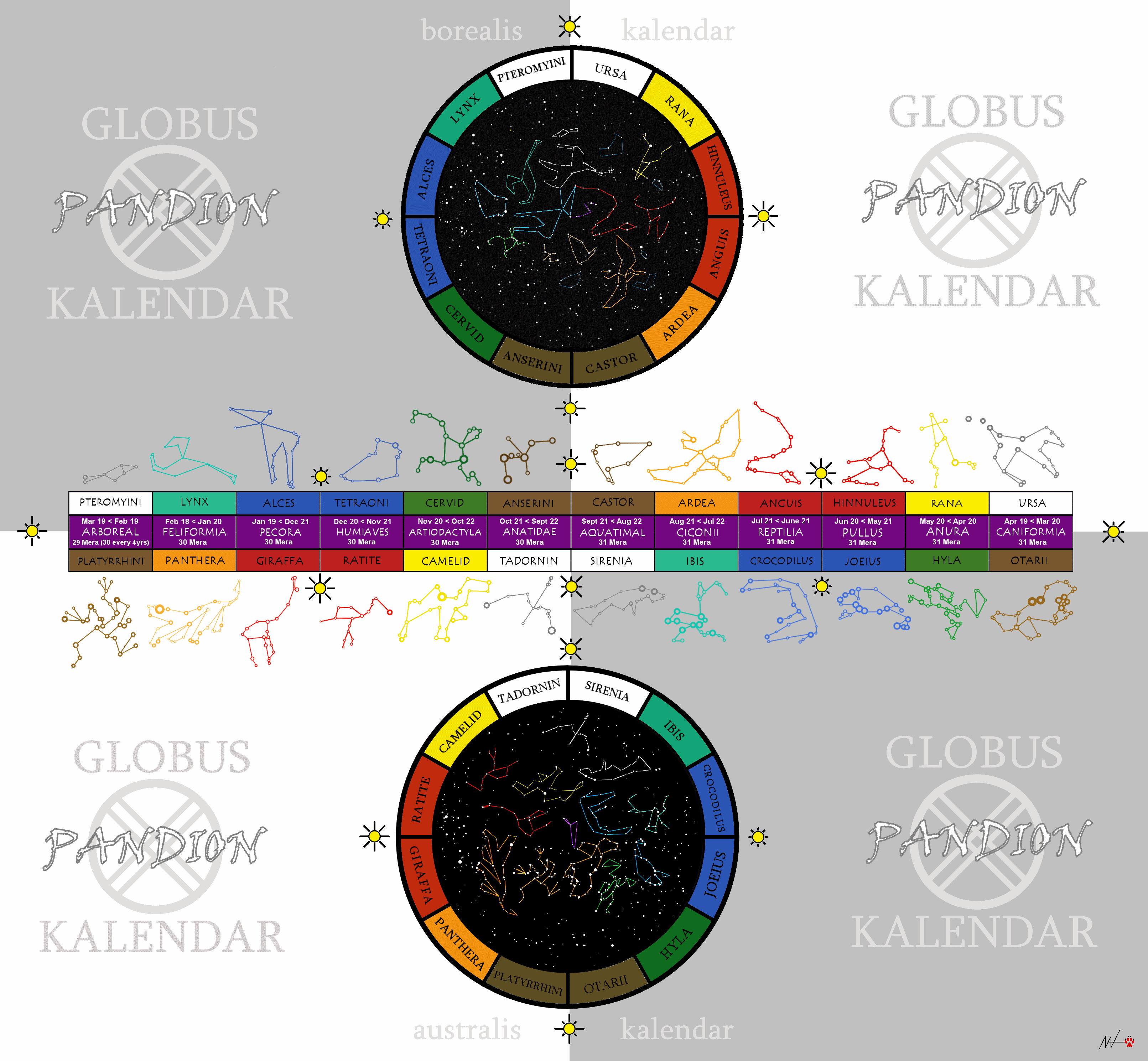

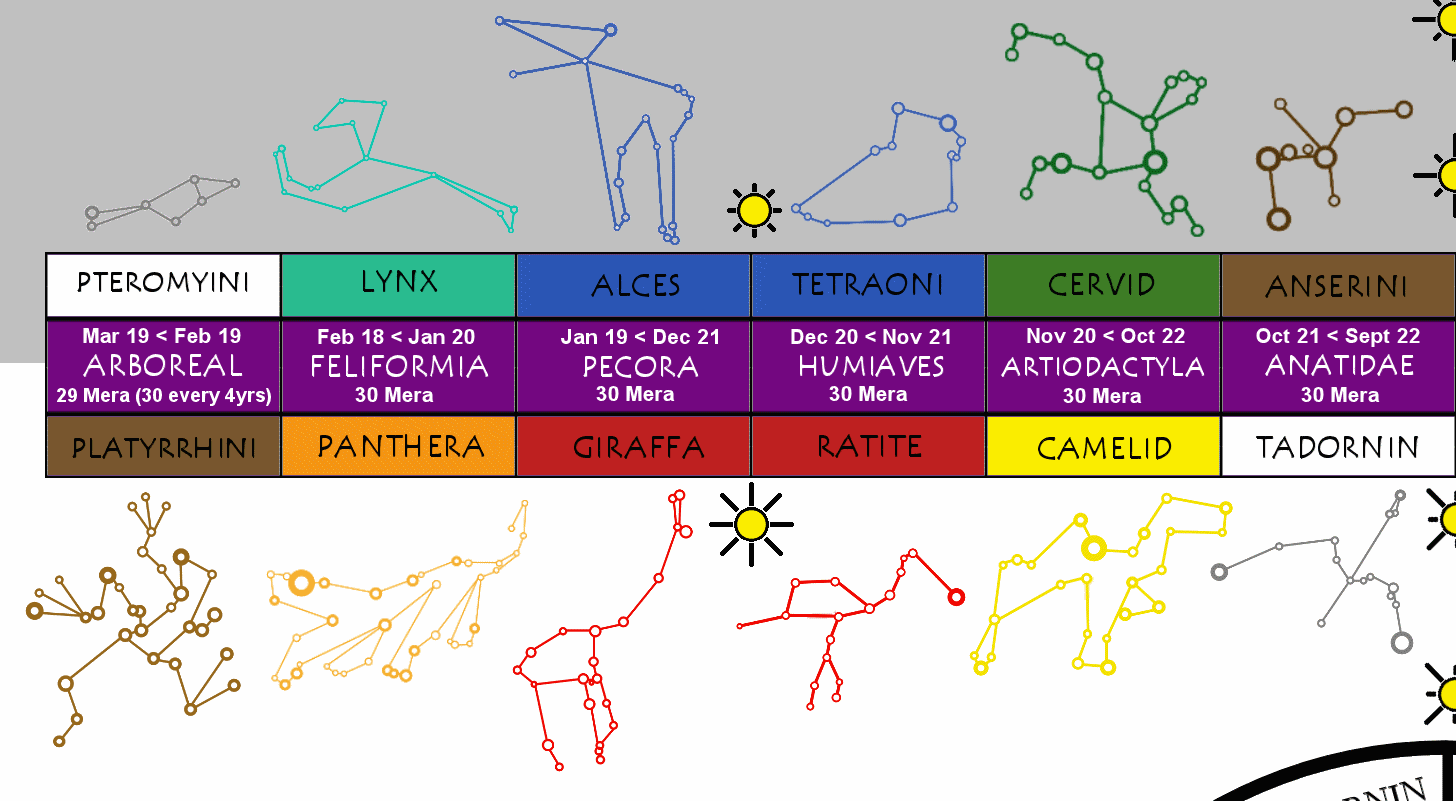
Ways of Interpreting Seasons: Tempus Types
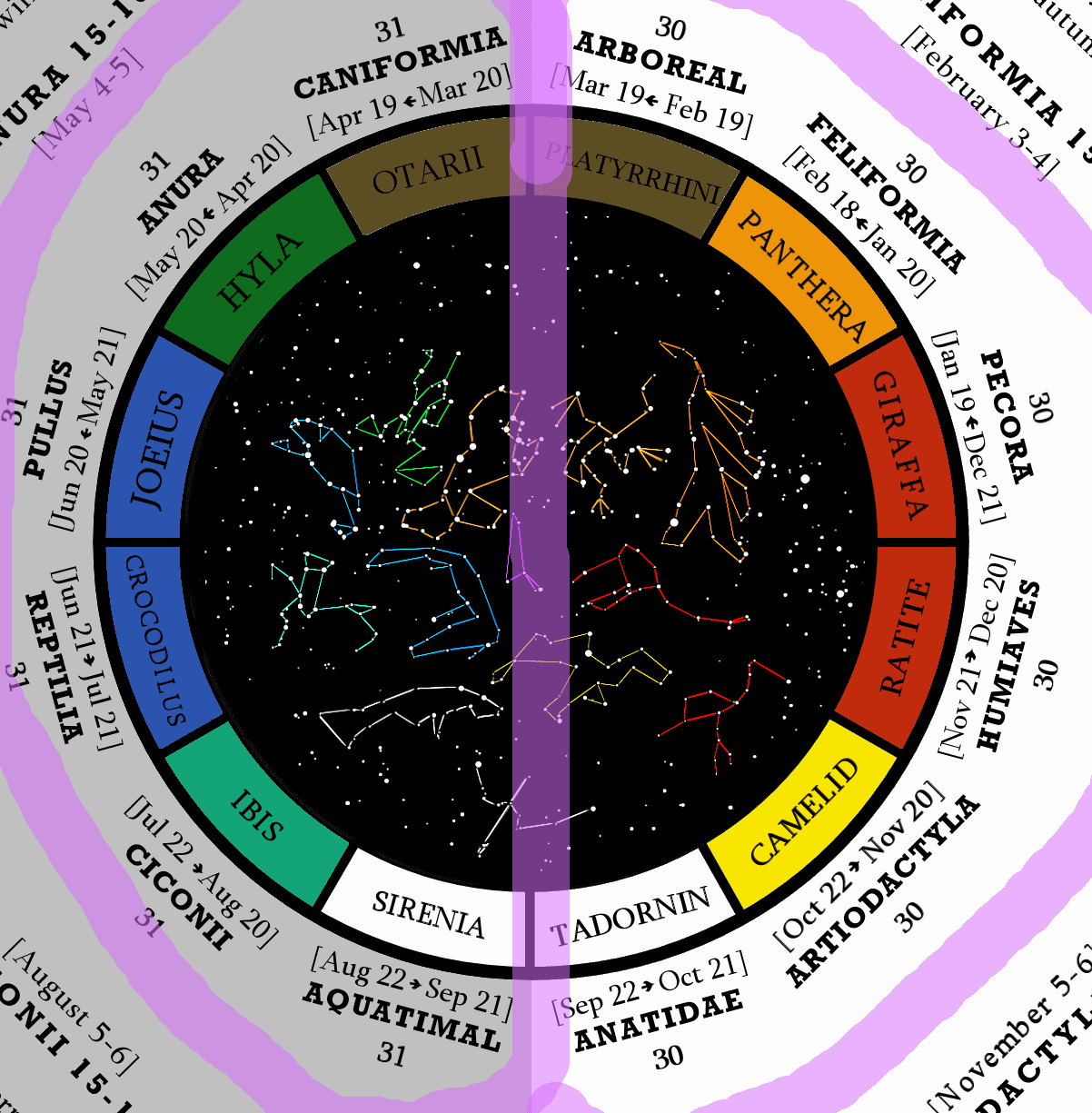 Luxnox Tempus
Luxnox Tempus
They are named as such because half the the year is dark (represented by a grey background and is called the ‘Nox Mensis’ – the months of dark) and the other half of the year is light (represented by a white background and is called the ‘Lux Mensis’ – the months of light), like that of night and day, creating a two season divide of light and dark.
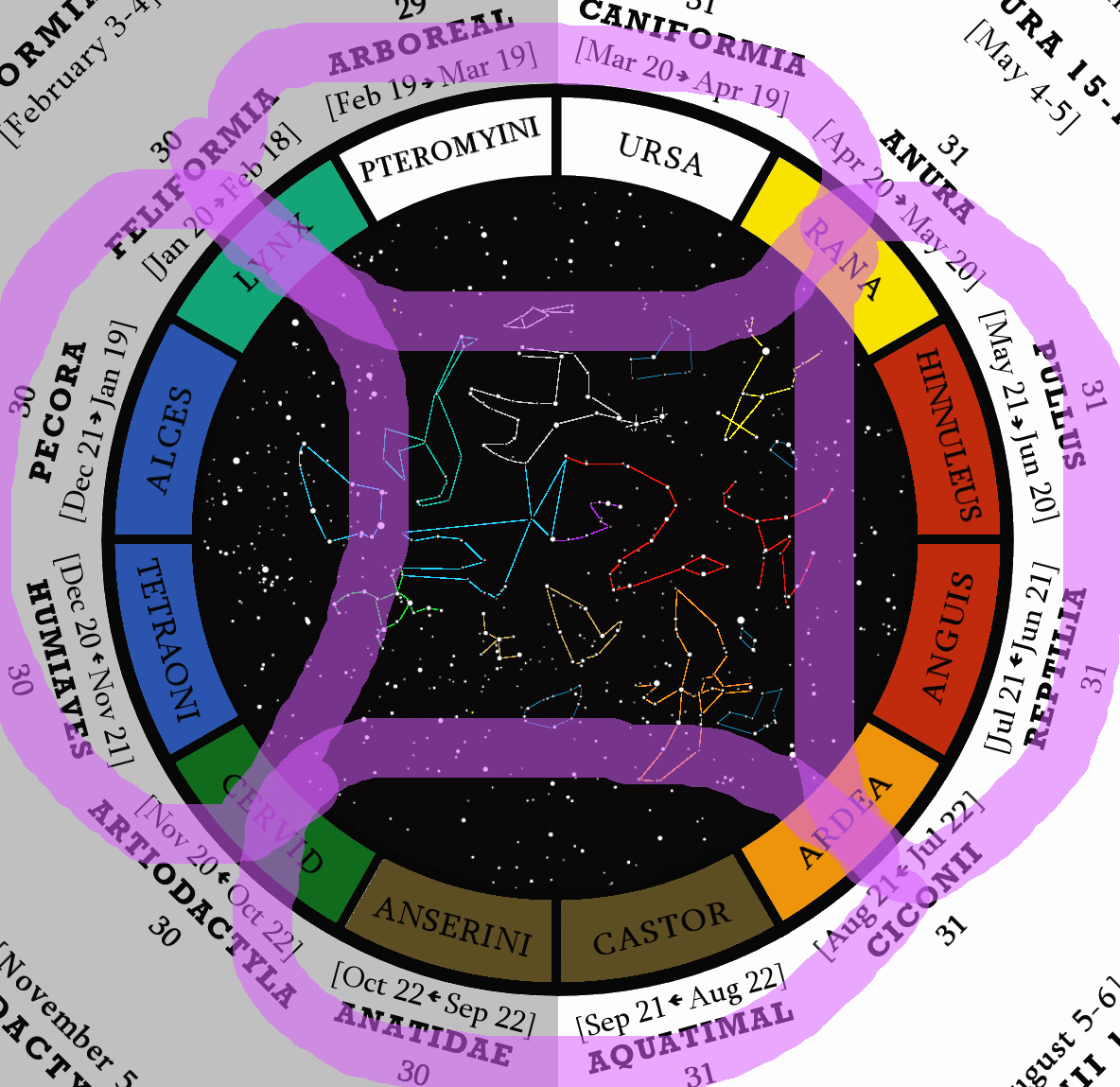 Transmera Tempus
Transmera Tempus
The span between each Transmera (transition day) from the day of Transequilux (transition to vernal equinox) to the day of Translux (Transition to summer solstice) for example, can be considered the Vernus Tempus (spring season). Groupings like this are called Transmera Tempus (Transition day seasons). Having four seasons a year. It can also be considered as the four times of day: Dawn, Day, Dusk, and Night.
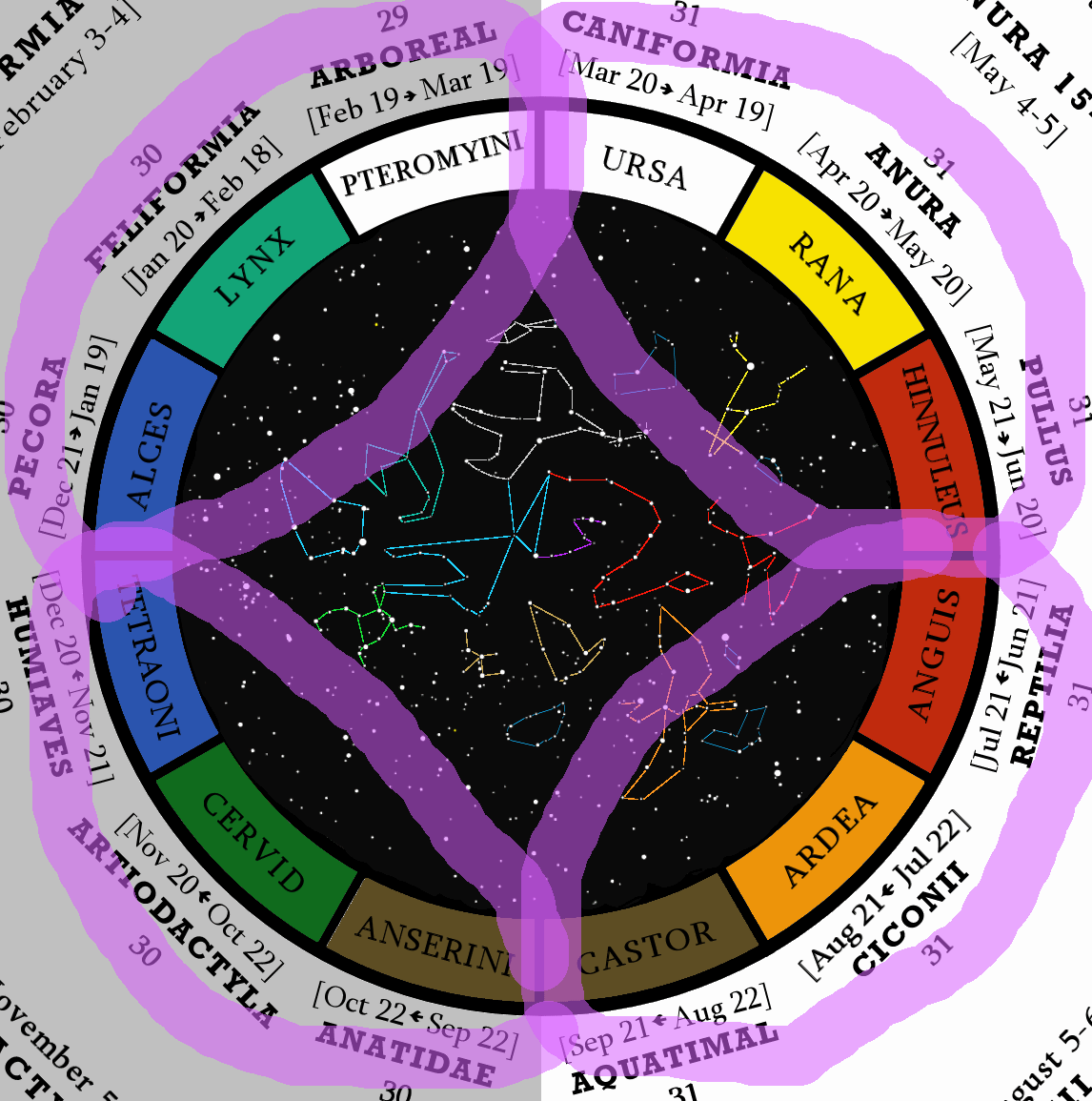 Trimensis Tempus
Trimensis Tempus
An alternative way of looking at four seasons, especially for far temperate regions that are closer to the poles, is by separating the mensis by the solar changes so that they are in groups of three, i.e. Ursa, Rana & Hinnuleus. This is called a Trimensis (three months) and each trimensis can be considered a season in it of itself, i.e. Ursa (Late Spring), Rana (Transition between Spring & Summer), & Hinnuleus (Early Summer) is the Vernal Trimensis (the three months of spring) and Anguis (Late Summer), Ardea (Transition between Summer & Fall), & Castor (Early Fall) is the Aestus Trimensis (three months of summer).
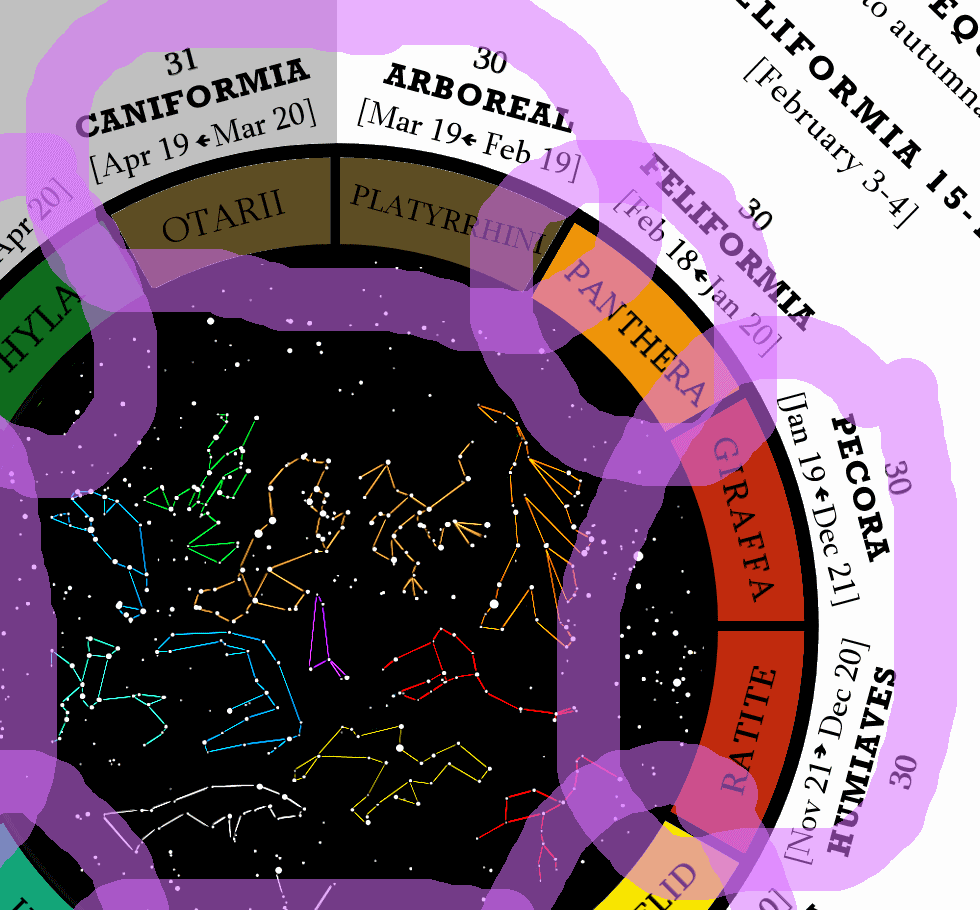 Solaris Tempus
Solaris Tempus
You will also see that each solar change has the same colour on either side of it. The two adjacent mensis of the same colour can represent a season, a single mensis with none of the same colours beside it would be considered transitions between each season – potentially being a season in itself.
For example, the two red mensis of Ratite & Giraffa would represent summer; the orange mensis of Panthera would then be the transition to autumn, and the brown mensis of Platyrrini & Otarii would then be autumn.
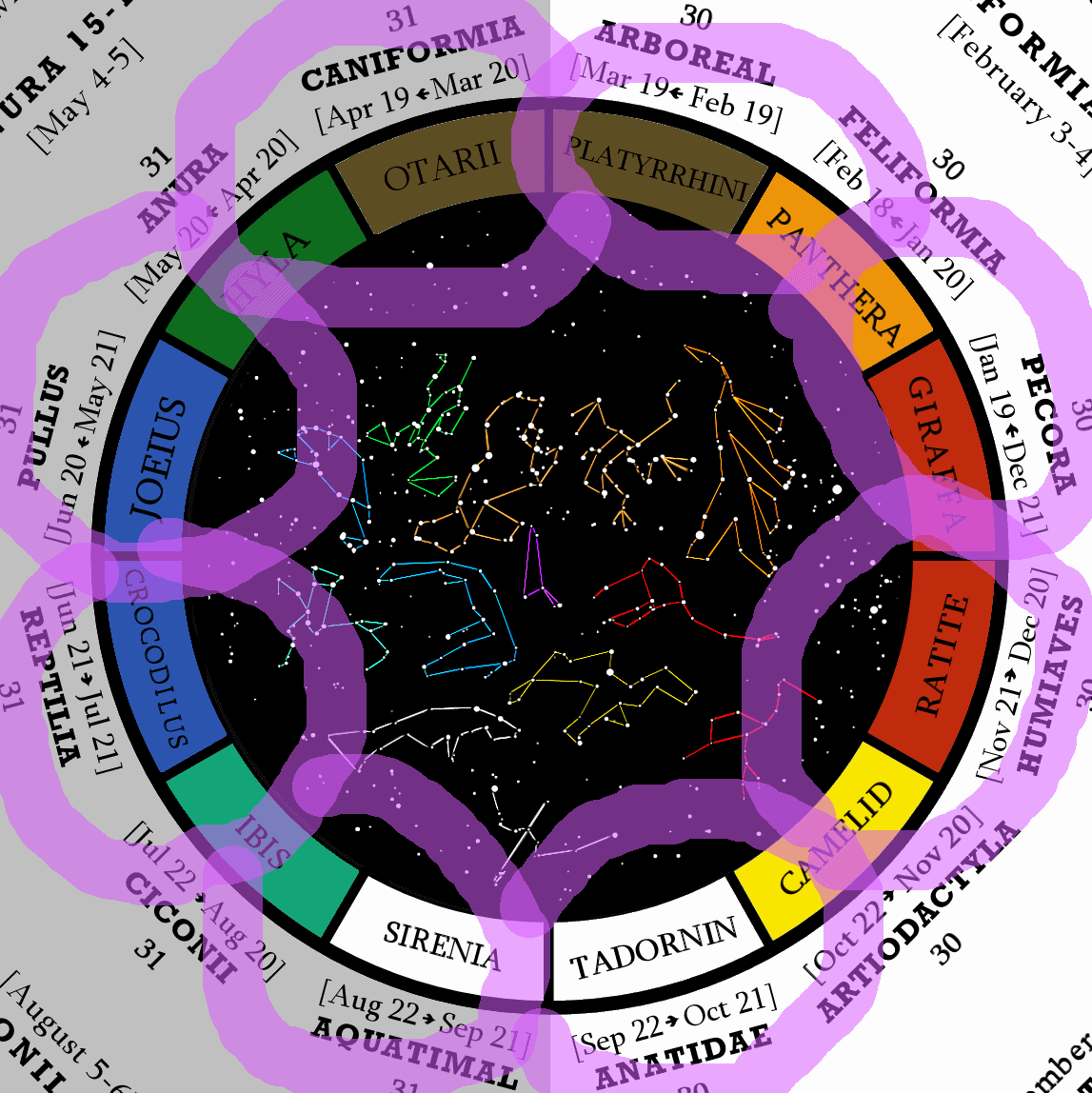 Parvus Tempus
Parvus Tempus
These are small seasons containing one solar mensis and a half of a transmensis.
Combining Different Tempus Types
Depending on your regional climate having the entire year using one tempus type may not make sense. This is when you can combine different tempus types. Here are a couple examples:
 Active Period – Where there is more changes in one area of the year and not so much in the rest.
Active Period – Where there is more changes in one area of the year and not so much in the rest.
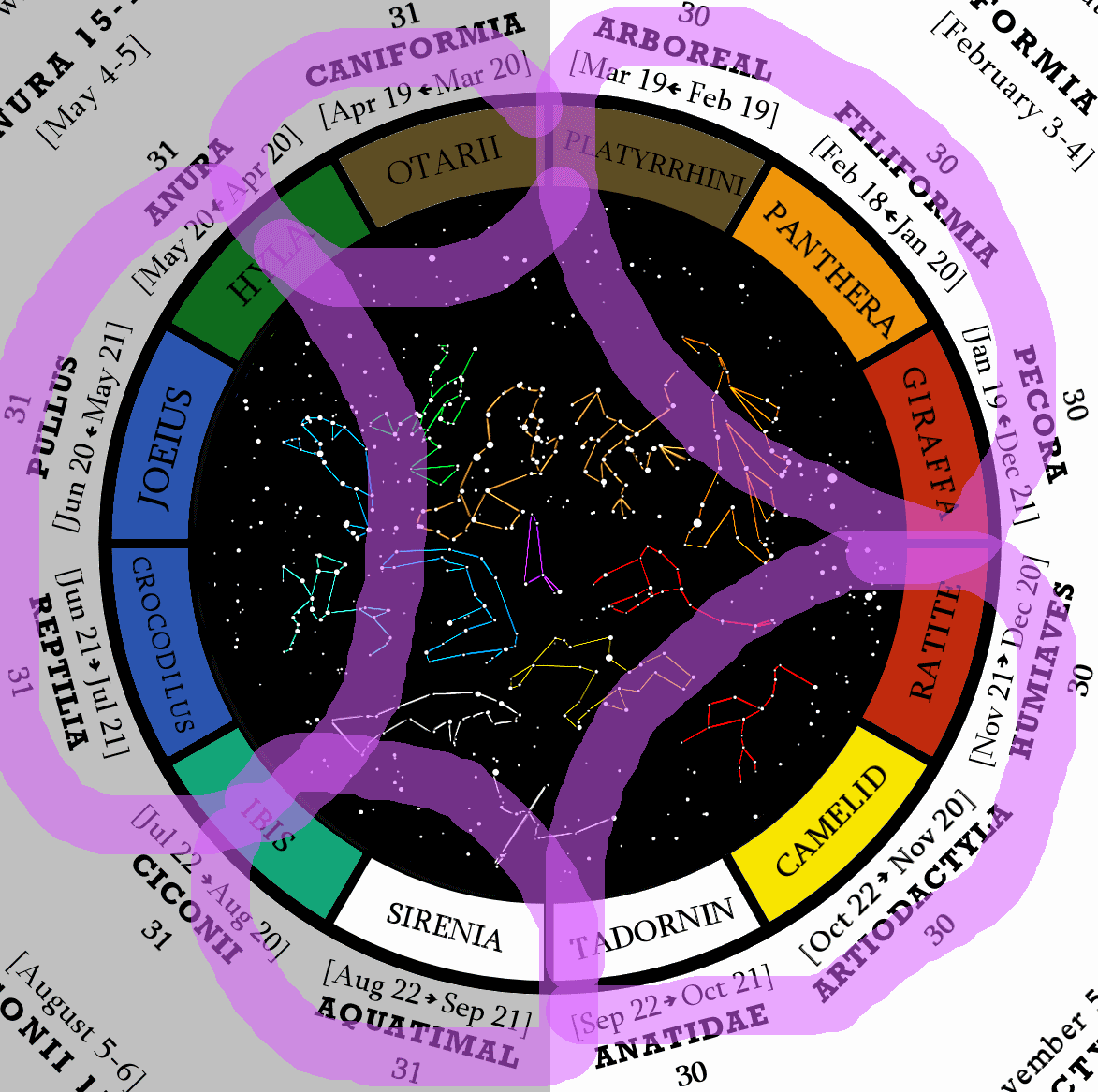 Active Transitions – The transitions on either end of a season has a lot of changes, but not so many changes for the rest of the year.
Active Transitions – The transitions on either end of a season has a lot of changes, but not so many changes for the rest of the year.
The Weeks in a Month
The week in these kalendars were divided to be as efficient as possible which led to a six day week wherein the month has 5 weeks.
The days of the week were named in Greek meaning Day one, Day two Day three etc. Greek was decided on because it avoids the Latin words Die (for day) and Sex (for six) that could be misunderstood. It was reasoned that Greek is common throughout maths – a universal language, so this wouldn’t conflict with global use. This also goes into why Latin is commonly used – being the scientific language of the world and is thus neutral for global use. Each region could very well use local names for each month and function just like how the scientific language is already used throughout the world.
Half of the year has months that are 30 days long, and the other half is 31 days long with the outlying day considered to be a long weekend of sorts and is included with the previous week.

The following week continues on as if the previous day didn’t take up that slot. So every month begins on the first day of the week. The Arborealis mensis is the only differing mensis of the trend, being 29 days long.

In this case we don’t shift the days of the week either – ignoring it and continuing the next month on the first day of the week. Just by ignoring this day shift we have a calendar that is more reliable for scheduling because every year the days fall on the same date, and you never have to replace your calendar with the following year’s calendar to keep track.
New Year’s & Year Date
According to the celestial events, the year would begin at the ‘dawn’ of the year at Equilux (Vernal/Spring Equinox). This would establish two new years – one in Australis, and one in Borealis. But when it comes to dating the global year it would fall upon the Borealis Equilux simply because the majority of the human population on the planet resides there.
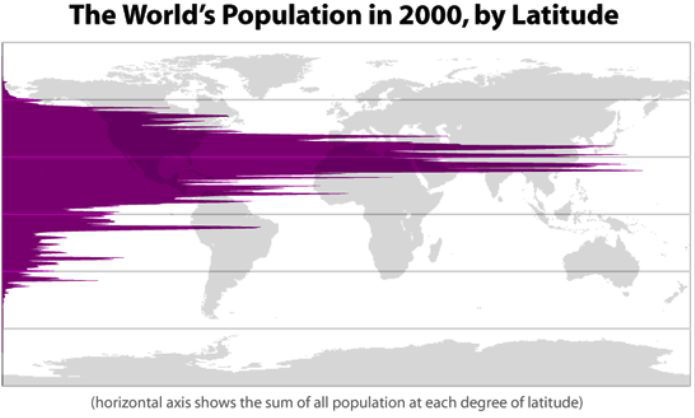
Just like our current civil calendar, a leap year would occur every four years by adding one extra day, which conveniently falls upon the Arboreal mensis that usually has 29 days in a regular year. The frequency of leap years is summed up as not having any more than 8 leap years every 33 years to keep the dates aligned with the solar events.
The challenge left is the Year Date. What would be the most appropriate year date for the world to use? For the time being I’ve slapped on a personal count down that happens to end on March 20th 2020 A.D. with the idea that by that point my work on Ehoah would be pretty well complete in theory, and would have the official year date start its effect then.
One of the ideas is to use the date in which we first physically observed our entire planet from the outside, commemorated by the “blue marble” photo taken on December 7, 1972, by the crew of the Apollo 17 spacecraft. Thereby on March 20th 2020 A.D. the date would be Caniformia 1st / 48 (name of year date Earth Year?).

The other major year date contender for neutral global utility is the Holocene year date. The Holocene Era (HE) or Human era, is a year numbering system that adds exactly 10,000 years to the currently world-dominant Anno Domini (AD) or Common Era (CE) system, placing its first year near the beginning of the Holocene epoch and the Neolithic revolution. This form of year dating makes for easier geological, archaeological, dendrochronological and historical dating, as well as it being based on an epoch which is more universally relevant. The current year of 2014 AD can be transformed into a Holocene year by adding the digit “1” before it, making it 12014 HE.
Conclusion
So these are the Borealis, Australis & Globus Kalendars/Year Wheels. Their use encourages more awareness of our surrounding environment, its wildlife, seasons, solar events, and stars; Represent the experiences of both hemispheres fairly, is universal and perpetual for ease of utility.
All that is left is the year date. Which do you think would be best?
ADDENDUM Anserini 15/12014 H.E. (October 16th/ 2014 A.D.):
The kalendar is now available for purchase here




